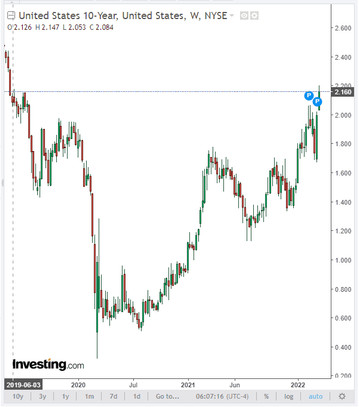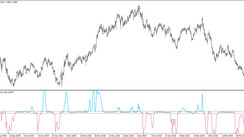During volatile trading on Tuesday, the dollar fell. Its weakening, in particular, contributed to weaker-than-expected macro data published at the beginning of yesterday's US trading session.
According to data provided by the US Department of Labor, the Producer Price Index (PPI) rose by +0.8% in February after rising by +1.2% in January. In annual terms, PPI rose by +10% in February, reaching a maximum since the start of such statistics in 2010. Rising producer prices signal, that problems in supply chains have continued to put upward pressure on prices, even before the start of Russia's special military operation in Ukraine, which caused fluctuations in energy and commodity markets.
In addition to being the world's largest energy supplier, Russia and Ukraine account for approximately 30% of world wheat exports. The military conflict in Ukraine against the backdrop of Western sanctions against Russia may lead to an even greater increase in energy and food prices around the world, which will cause increased inflationary pressure on the global economy. At the same time, the median level of consumer inflation expectations in the US for the year ahead was 6.0% in February, against 5.8% in January. And as we remember, from a recent report by the US Department of Labor, the annual consumer price index (CPI) reached a 40-year high of 7.8% in February.
Thus, the Fed is in a very difficult situation. Its leaders need to tackle the challenge of curbing inflation in a way that doesn't hurt the US economic recovery or trigger a recession.
The dollar is also declining on weakening demand for safe-haven assets, and risks, including those related to the situation in Ukraine, inflation and decisions of central banks, have already been priced in. Markets have calmed down a bit. Investors also hope that in the near future results can be achieved in the negotiation process between Russia and Ukraine, which will reduce the degree of geopolitical tension.
The DXY dollar index at the time of publication of this article is near the 98.71 mark, despite the decline, while remaining in the zone of the recent local maximum of 99.42, corresponding to the levels of almost 2 years ago. At the same time, the yield on 10-year US government bonds is 2.160%, being at the level of almost 3 years ago. Bond yields are growing against the backdrop of their ongoing sales, providing tangible support to the dollar.

No less volatile American trading session is expected today. At 12:30 (GMT) US retail sales data will be published. This report (Retail Sales) is a leading and main indicator of consumer spending. The Retail Control Group measures volume across the entire retail industry and is used to calculate price indices for most products. A high result strengthens the US dollar, a low result weakens. However, a significant relative decline is expected. In the previous month (January), the value of the "Retail Sales" indicator was +3.8%, and "Retail Control Group" +4.8%. According to the forecast, both indicators are expected to decline to +0.4%, which may put pressure on the dollar ahead of the publication (at 18:00 GMT) of the Fed's decision on rates.
It is widely expected that the rate will be raised by 0.25% at this meeting. However, during the period of publication of the decision on the rate, volatility may increase sharply throughout the financial market, primarily in the US stock market and in dollar quotes, especially if the Fed's decision differs from the forecast or unexpected statements come from its management. Of interest will also be the FRS report with forecasts for inflation and economic growth for the next two years and, no less important, individual opinions of FOMC members on interest rates.
At 18:30 (GMT), the Fed's press conference will begin, which will be of the greatest interest to market participants. They want to hear Powell's opinion on the Fed's future plans for this year. Market participants expect the Fed to raise rates 5-6 times this year, although in February these expectations included 6-7 interest rate hikes. Powell can also provide insight into how far the Fed has come in its plan to cut its balance sheet, which is worth about $9 trillion. The implementation of this plan can be started shortly after the May 3-4 Fed meeting.
Any unexpected statements or hints of Powell, which will differ significantly from the current market expectations, will cause an increase in volatility, primarily in dollar quotes and on the US stock market.
However, volatility may rise before the release of the Fed's decision on rates, when US President Joe Biden begins his speech at 15:45 (GMT), especially if he makes loud statements.





